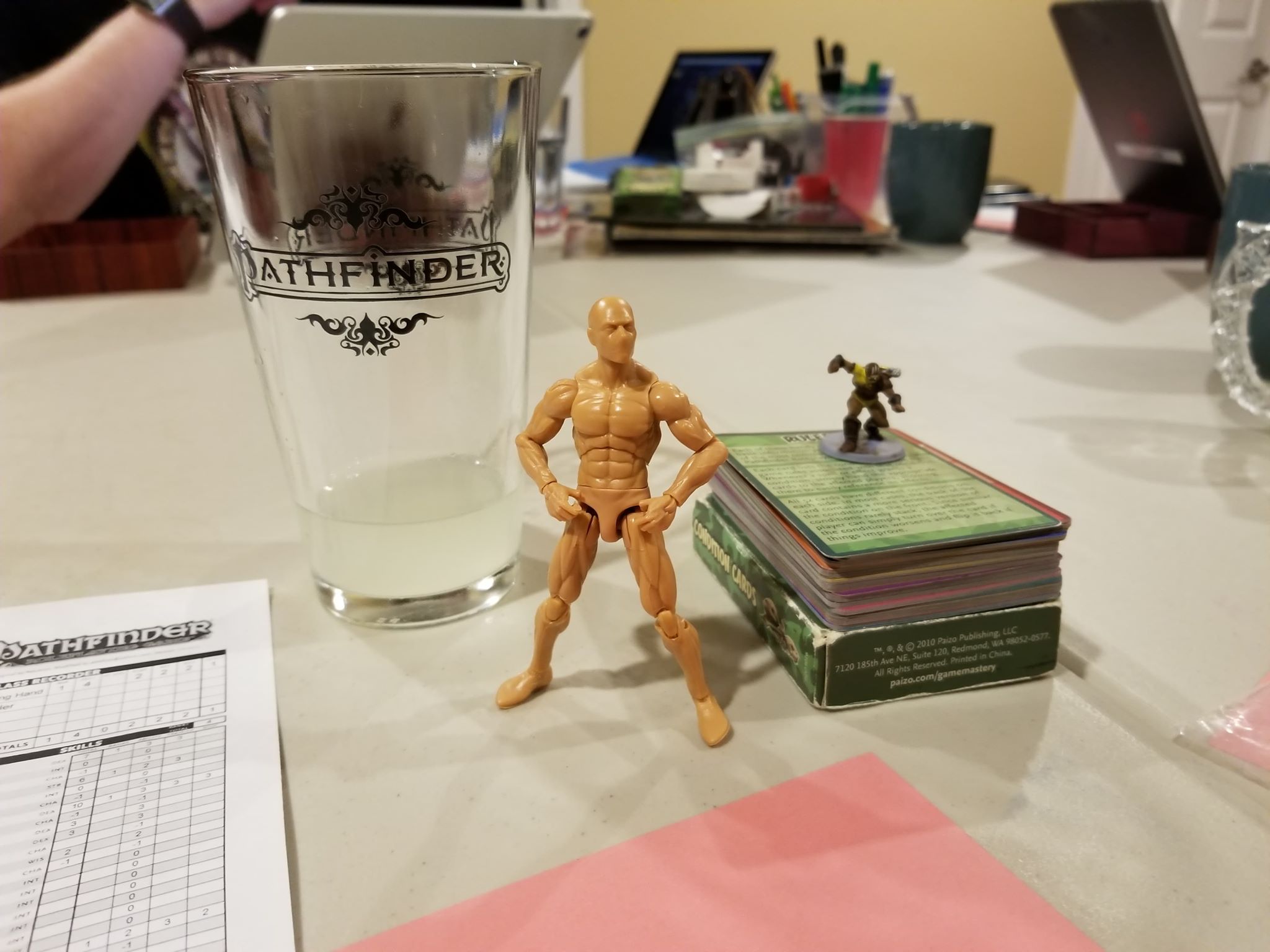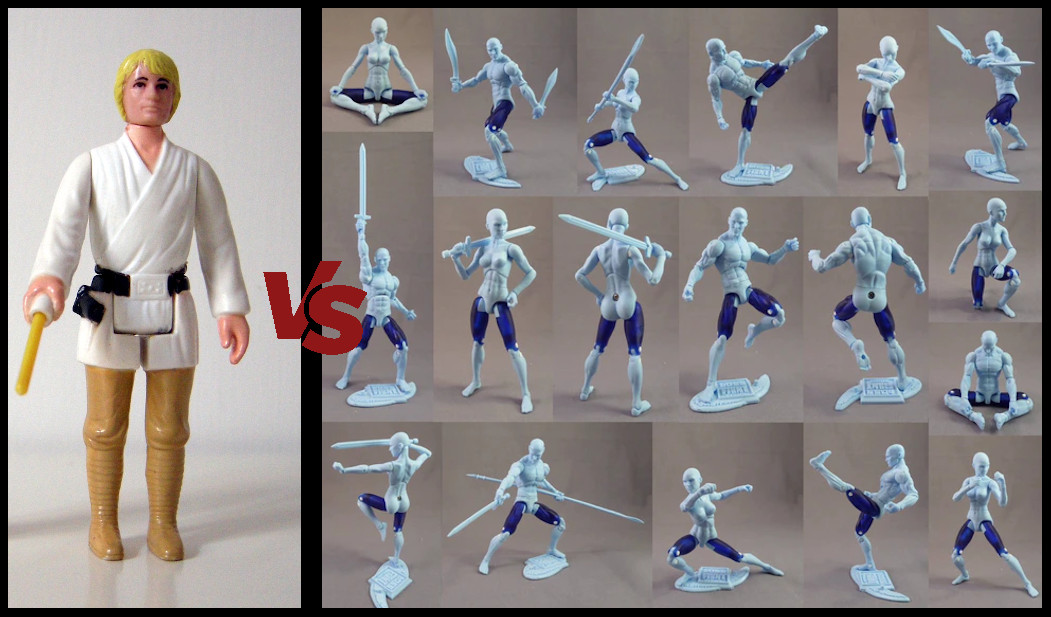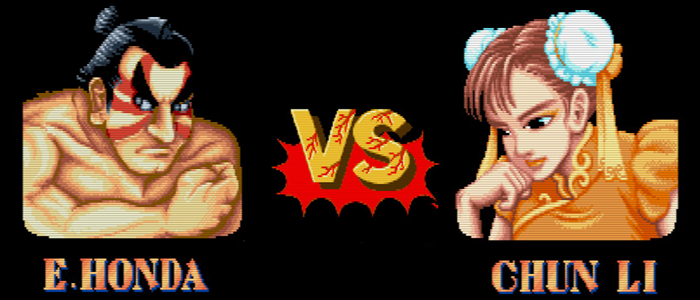At PaizoCon this year, my shoulders were flat on the ground, my knees dangling near my eyes like another black eye waiting to happen. As I counted up from 0, I rolled back and onto my knees, lifting my shoulders before the 3. All this for want of an action figure.
Smart Marks
You see, Know Direction and Paizo’s own Luis Loza was running a session of World Wide Wrestling for myself, Know Direction’s own Randal Meyer, and a very nice lady we didn’t know named Ryan. World Wide Wrestling is a storytelling game that simulates being wrestlers (as in athletic entertainers) working with their opponents to put on a kayfabe match with a predetermined finish.
If you understood that last sentence, then you, like me and Luis, probably are familiar with professional wrestling. If not, then you, like Randal and Ryan, probably aren’t. World Wide Wrestling being a storytelling RPG, it doesn’t include a list of move names (or if it does, the players in this one-shot session weren’t privy to them). Since I couldn’t say “rope assisted reverse O’Connor roll” or “Bret/Piper Wrestlemania VIII finish” and be understood by my non-wrestling fan fellow players, I needed to find other ways to explain what my character, Monohombre, was doing. Hence, the demonstration.
However, this is not a scenario I find myself in when I game at home. Why?
Action Figures
If I need to explain a physical movement during a roleplaying session, I am never more than a frantic rush away from an action figure solution.
I know I’m known for my toy collecting and love of action figures, but for serious. Roleplaying games are the codified, matured evolution of the imagination games children play, and miniatures are the likewise evolution of the toys we played with for those games. However, action figures also evolved in a different direction independent of games. By marrying the two adult evolutions of children’s play, you get entirely new ways to express your character and your actions at the table.
A few months ago, when I was playing in my friend Will’s Emerald Spire game with a ported over Monohombre, I had a blank action figure on hand that I intended to use to make a custom based on my character. Not only could I demonstrate the wrestling maneuvers Monohombre was subjecting the poor goblins to, I surprised myself by how effectively I could convey Monohombre’s body language during his introductory trial scene.
Having an action figure at the table didn’t just enhance my play experience, it leveled it up. I feel as under equipped playing without an action figure as I do playing without condition cards. The right action figure (or action figures) can articulate your character’s movements when words might fail you.
How?
Articulation. OK, and range of motion.
Articulation
An action figure’s ability to move is called it’s articulation. The various mechanics that allow it to do so are points of articulation (or POA). A POA indicates that the action figure can move from that point of the body.
Range of Motion
Just because two action figures have a point of articulation in the same body part doesn’t mean they have the same ability to move. The difference is range of motion. A swivel joint is a peg in a hole and moves like a helicoptor propellor, 180 degrees in two directions, or until it hits a stopping point. A ball joint is like your shoulder, adding a third axis to how the limb can move.
For example, your standard Star Wars action figure has five POA: neck, shoulders, and hips.All five are swivel joints. That means Luke Skywalker can turn his head left to right, rotate either arm, or kick a Stormtrooper anywhere below the belt. Conversely, my favourite action figures, Boss Fight Studio’s Vitruvian H.A.C.K.S, have 17 points of articulation.
A Vitruvian H.A.C.K, like the blank I was using for Monohombre, is practically an artist mannequin. In fact, you could use a cheap artist mannequin to similar effect. One reason I favour action figures is that artist mannequins tend to have higher tension in their joints to limit their articulation to human-like mobility. Action figures, like Pathfinder characters, don’t have that limitation.
Special Offer
I was in the middle of writing this article and thought “You know what would be an everybody wins scenario?” So I reached out to my contact at Boss Fight Studio and explained that I was working on an article about using action figures as RPG tools. A few exchanges back and forth and lots of exclamation points later, and:
If you visit the Boss Fight Shop between now and December 21st and use offer code KNOWDIRECTION (all caps) at checkout, you get 10% off your entire order. It’s not valid on preorders, but otherwise, anything goes. In addition to the Vitruvian H.A.C.K.S. I’ve been plugging. If you are interested in their Legends of Lucha Libre or Buck O’Hare figures, you can grab them as well. Do note, I haven’t experienced any Boss Fight figures outside of their Vitruvian H.A.C.K.S, so that is their only line I can personally vouche for.
Here are a few products I suggest you check out if you are looking for a 4″ scale companion for your miniature:
- BLANKS: Like the figure I use for Monohombre, Vitruvian H.A.C.K.S. blanks are plain, monochromatic figures that come in a variety of colours (including transparent!). If you are looking for the super articulated version of Sorry pieces, these are your best (and cheapest) best. Note that I’m using the masked head for Monohombre. Each blank has a selection of heads, including one with a face. Blanks come in male, female, and skeleton bodies.
- BASICS: Basics are the middle ground. They have fewer accessories and fewer paint applications than the standard Vitruvian H.A.C.K.S. figures, but, unlike blanks, they have ancestries and classes.
- SERIES 1: Series 2 is Fantasy themed, but you might be wondering what and where Series 1 is. It’s weirdly hard to find even though figures from those waves are still for sale. The theme was Ancient Greece. The variety of moulds is more limited than Series 2 (it was their launch product) but if you’re looking for variety, there are some cool designs hidden away here.
- SERIES 2: This is where Boss Fight shines. Detailed sculpts and accessories bursting with personality that hint at a larger story. If you want an action figure that looks like your character out of the package, be they wizard, cleric, rogue, fighter, or, uh… miscellaneous.
Full disclosure: I worked with Boss Fight Studio on the Looking For Group – Richard The Warlock action figure I developed for my day job at Blind Ferret. However, my seeking them out for that project, like this deal, was a reflection of how much I appreciate the quality of the work they put out. No money is exchanging hands for this deal, this was not a paid blog post, and it would have gone up whether they agreed to this deal or not.









